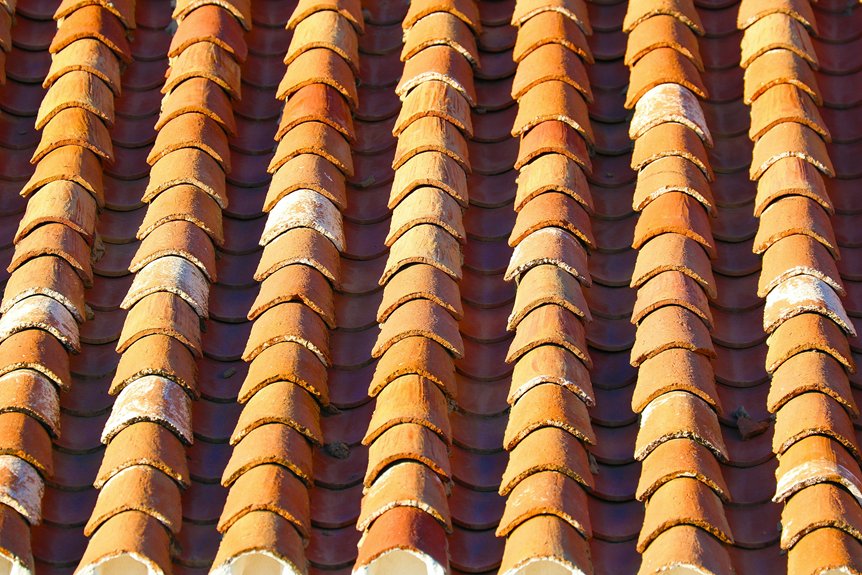In Oklahoma City’s hot climate, high temperatures can greatly impact your roof replacement process. Elevated heat weakens roofing materials, complicates installation, and affects adhesive performance, potentially leading to long-term issues. Choosing the right timing and materials is essential to guarantee durability and cost-effectiveness. Understanding how heat influences each step of the project can help you make informed decisions, but knowing exactly when and how to proceed requires a closer look at these thermal effects.
Impact of High Temperatures on Roofing Materials
High temperatures can considerably weaken roofing materials, leading to accelerated deterioration and reduced lifespan.
When exposed to intense heat, materials undergo thermal expansion, causing them to expand and contract repeatedly. This constant movement stresses the roofing components, promoting cracks and loosening of seals.
Over time, thermal expansion accelerates material degradation, weakening the roof’s structural integrity. The increased stress from temperature fluctuations can cause asphalt shingles to become brittle, metal roofs to warp, and sealants to fail prematurely.
As a result, high heat shortens the durability of roofing systems and increases the likelihood of leaks and other damage.
Understanding this impact emphasizes the importance of selecting heat-resistant materials and implementing proper maintenance to mitigate heat-related deterioration. For those experiencing such issues, scheduling a free inspection request with professionals can ensure timely evaluation and expert care.
Optimal Timing for Roof Replacement in Hot Weather
When is the best time to replace your roof during hot weather to guarantee excellent results?
The ideal period is typically during the late spring to early fall, known as the best months for roofing projects in Oklahoma City. During these months, temperature fluctuations are more moderate, allowing roofing materials to adhere and cure properly.
Avoid peak summer months when extreme heat can cause materials to become too soft, leading to potential installation issues. Conducting roof replacement when temperatures stay between 50°F and 85°F guarantees better material performance and longevity.
Planning your project within this window minimizes the risks associated with high heat, such as material warping or improper sealing. Timing your replacement correctly maximizes durability and reduces costly repairs caused by heat-related material degradation.
Safety Considerations During Heat-Related Roof Work
Because working on a roof during hot weather poses significant safety risks, it’s vital to implement proper precautions to protect yourself and your team.
Heat exhaustion is a serious concern, so staying hydrated and taking frequent breaks is imperative. Wearing appropriate protective gear, such as wide-brimmed hats, UV-protective clothing, and breathable gloves, helps minimize heat exposure and skin injuries.
Monitor yourself and others for symptoms like dizziness, nausea, or weakness, and act immediately if signs of heat-related illnesses appear.
Scheduling work during cooler parts of the day, such as early mornings or late afternoons, reduces risk.
Prioritizing safety measures guarantees a safer, more efficient roof replacement process despite the challenging heat conditions.
Effects of Heat on Installation Techniques and Adhesives
Heat can greatly influence the performance of installation techniques and adhesives during roof replacement. Elevated temperatures can compromise adhesive performance, causing it to cure too quickly or fail to bond properly. This leads to installation challenges, such as uneven adhesion and increased risk of membrane failure.
High heat can also cause roofing materials to soften or expand, making precise application more difficult. You must carefully select adhesives suited for hot conditions and adjust application timing to guarantee ideal bonding. Ignoring these factors risks compromised roof integrity and costly repairs.
Proper planning and understanding of heat’s impact help you maintain quality and safety in the installation process. By addressing these challenges proactively, you guarantee a durable, long-lasting roof despite Oklahoma City’s hot climate.
Cost Implications of Roofing Projects in Oklahoma City’s Climate
Oklahoma City’s hot climate considerably influences the overall costs of roofing projects by accelerating material degradation and increasing installation challenges.
This climate necessitates a detailed cost analysis to account for potential repairs and maintenance, which can drive up long-term expenses. Heat-related stresses may require higher-quality, more durable materials, raising initial investment costs.
Additionally, extreme temperatures can complicate installation, leading to longer project durations and increased labor costs. When planning your budget, it’s crucial to take these factors into account to avoid surprises.
Properly evaluating the climate’s impact helps you allocate funds effectively, ensuring your roofing project withstands Oklahoma City’s heat without unforeseen expenses.
Ultimately, understanding these cost implications supports smarter budget planning and a more resilient roof in the face of harsh weather conditions.
Conclusion
To ensure your roof replacement withstands Oklahoma City’s heat, careful planning and the right timing are essential. It’s best to avoid peak summer months and opt for late spring or early fall, which helps minimize issues related to materials and installation challenges. Using heat-resistant adhesives and following proper safety protocols will protect your investment and extend your roof’s lifespan. Proper planning not only boosts durability but can also save you money in the long run, making your roofing project a smart, lasting choice. For more information on how to schedule your free roof inspection, call us at (405) 543-2920 or visit us online at Top View Roofing.











